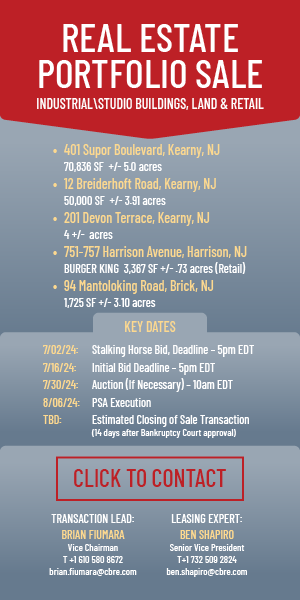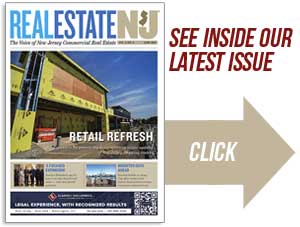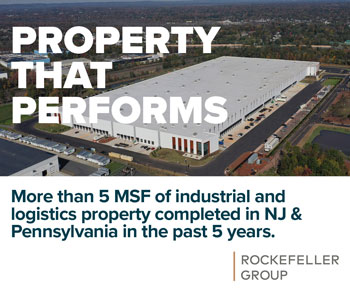One Geoffrey Way in Wayne — Courtesy: CBRE
By Robert L’Abbate, First Vice President, CBRE

Real estate development in Northern New Jersey has experienced some seismic shifts in the past couple of years, most notably, a transition from residential to industrial development in last-mile locations. Meanwhile, residential development continues to be strong in suburban communities, as large corporate office campuses come back on the market. Let’s explore each of these trends in more detail.
Market Shift from Residential to Industrial
Over the past few years, we have seen a real shift from residential to industrial development in Northern New Jersey. Five years ago, residential assets, especially ones located near transit-oriented communities, were commanding top dollar, but more recently, increased last-mile demand has outpaced traditional multifamily development land values. The pricing is particularly off the charts for developable land with superior truck access points. Part of the reason is that industrial development doesn’t face the same community opposition as residential development, which puts a much larger strain on municipal resources. For example, with industrial development, you don’t have the same water and sewer consumption and there is virtually no impact to school systems.
Suburban Redevelopment of Corporate Campuses
Increasingly, once-coveted corporate headquarters are being acquired for the purpose of repositioning. As the number of large corporate campus users continues to dwindle, we have seen a tremendous amount of municipal support and community buy-in for redevelopment. To that end, CBRE represented Toys “R” Us in the sale of its 191-acre, 621,000-sq.-ft. headquarters site located at One Geoffrey Way in Wayne, New Jersey. In exploring potential uses, an industrial facility didn’t make sense for the area as Wayne is largely a residential community. The site also did not support a retail play, so the buyer ultimately settled on occupying a portion of the site while examining residential as a potential viable option.
CBRE also worked with Sony on the sale of its massive 225,000-sq.-ft. headquarters site in Park Ridge. This was a complicated transaction because the property is located in two different municipalities, there were wetlands issues and the existing office building had a two-year lease-back. Our team coordinated meetings with town officials and worked with outside consultants to prepare a preliminary site plan demonstrating the redevelopment potential, including setbacks, access, subdivisions and potential location of multifamily residential units and luxury townhomes. We ultimately secured a non-contingent offer with pricing surpassing comparable office transactions in the market due to the potential future redevelopment of the property.
Furthermore, CBRE acted on behalf of Wallenius Wilhelmsen in its $4.5 million disposition of a 42,600-sq.-ft. former shipping company headquarters in Woodcliff Lake to a private investor. It was initially marketed as office with possible redevelopment due to its transit location. The purchaser is in the process of developing the property and seeking approvals for a transit-oriented development.
Urban Redevelopment of Infill Locations
CBRE has also seen an uptick in the redevelopment of urban infill locations. Technically, this started a decade ago when residential tenants were being pushed out of Manhattan and into the Jersey City waterfront. But now, we are seeing activity that’s even further from the Hudson River, in Jersey City’s West Side, Harrison and Newark.
For example, CBRE was instrumental in the $17 million sale of a former manufacturing site at 400 Claremont Avenue in Jersey City that housed a pigment and colorant plant for more than 70 years. A development group acquired the property and plans to build a six-story, 631-unit building with 12,044 sq. ft. of retail and restaurant space, along with a fitness center, coffee bar, golf simulator, rooftop community garden and private bowling alley in this Marchetto Higgins Stieve-designed building. With zoning in place at the time of sale, the property was sold not contingent upon approvals. As development continues to evolve in the Northern New Jersey market, the keys to success are speed to market, municipal support and community buy-in and sufficient existing infrastructure and access. Here at CBRE, we’re excited to see what lies ahead.
About the Author
As a First Vice President of CBRE’s Investment Properties Group, Robert L’Abbate and his team service high-profile clients including private investors, partnerships, lenders and institutions of various net worth. Robert has specialized expertise and excels in the most complex transactions, including portfolio sales, distressed property sales, note sales and time-sensitive 1031 tax exchange transactions.










